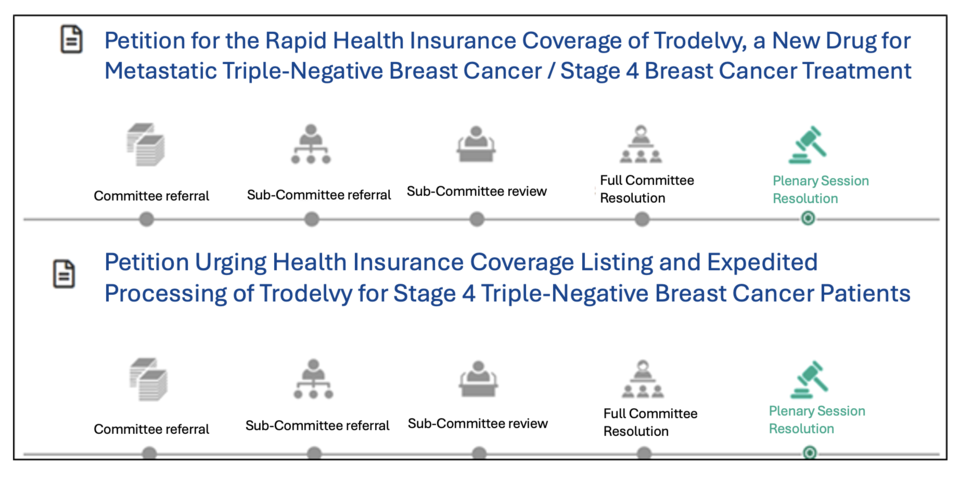Incremental Cost-Effectiveness Ratio (ICER) Remains Key Barrier for Insurance Coverage

Since passing the Severe Cancer Disease Review Committee last November, the reimbursement listing process for Trodelvy (ingredient: sacituzumab govitecan) has made little progress. The primary issue appears to be the incremental cost-effectiveness ratio (ICER) threshold for insurance coverage.
Trodelvy is an antibody-drug conjugate (ADC) targeting the Trop-2 protein. In May 2023, the Ministry of Food and Drug Safety (MFDS) approved it in South Korea as a second-line treatment for metastatic triple-negative breast cancer (TNBC) patients, excluding cytotoxic chemotherapy, regardless of genetic mutations or biomarkers.
During the November review meeting, reimbursement criteria were set for "adult patients with unresectable locally advanced or metastatic TNBC who have received at least two prior systemic treatments, with at least one for metastatic disease." Following this decision, public petitions urging reimbursement were submitted in December and April, each garnering over 50,000 signatures.
However, the prolonged delay in securing reimbursement has placed a heavy financial burden on patients. Industry insiders attribute the delay primarily to the high ICER value in the economic evaluation.
Trodelvy, similar to Enhertu, is awaiting a flexible ICER application. The ICER is a standard tool for assessing the economic value of new drugs with enhanced efficacy, measuring the additional cost per unit of health benefit compared to existing alternatives. Drugs are considered cost-effective if their ICER falls below a specified threshold.
Trodelvy meets all the criteria for flexible ICER application under the government’s favorable conditions for innovative drugs. These criteria include: (1) the absence of alternative or equivalent therapeutic options, (2) clinically significant improvements such as substantial survival extension, and (3) approval through expedited review by the Ministry of Food and Drug Safety (MFDS) or receiving breakthrough therapy designation (BTD) from the U.S. FDA or PRIME status from the European EMA.
Nevertheless, Trodelvy’s ICER reportedly stands around $52,000, posing significant challenges for reimbursement listing. Although South Korea has no officially fixed ICER threshold, data from economic evaluations between 2007 and 2021 show median ICER values of $12,000 for general drugs, $34,000 for cancer treatments, and $24,000 for orphan drugs. Enhertu, another breast cancer treatment listed for reimbursement in April, had an ICER in the $40,000 range.
A Gilead Sciences representative commented, "While we cannot disclose specific details, we are engaged in discussions with health authorities to improve patient access through Trodelvy’s reimbursement."
Meanwhile, the Health Insurance Review and Assessment Service (HIRA) has announced plans to revise the drug pricing system to enhance patient access through appropriate compensation for innovative drugs. Their focus is on refining the definition of "innovation," a critical factor in determining the ICER threshold.

